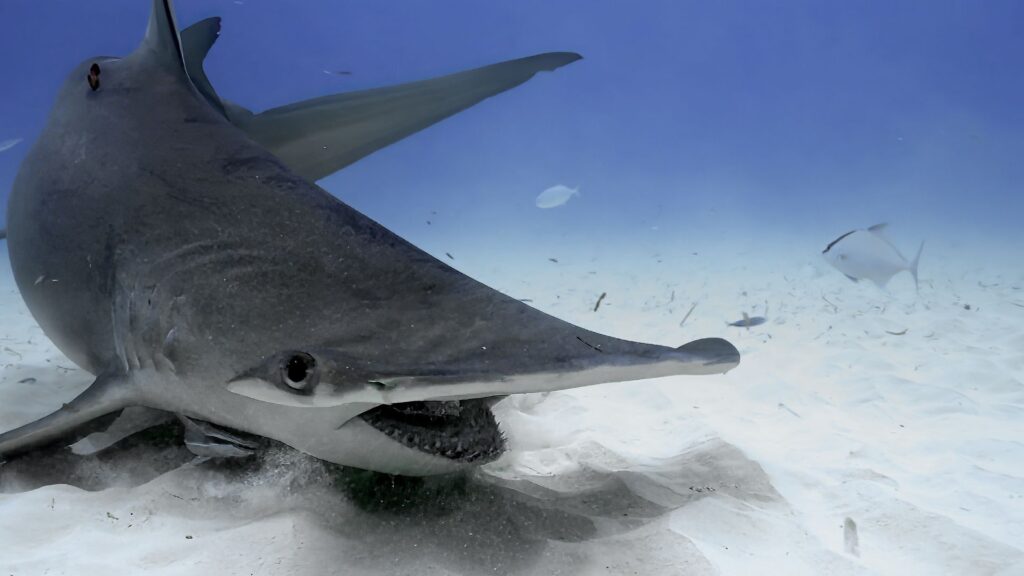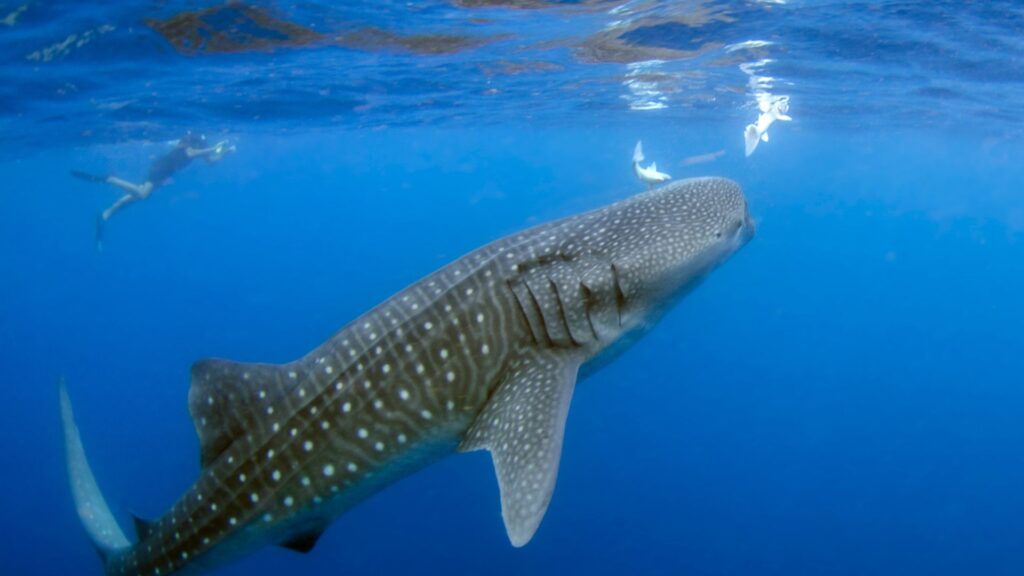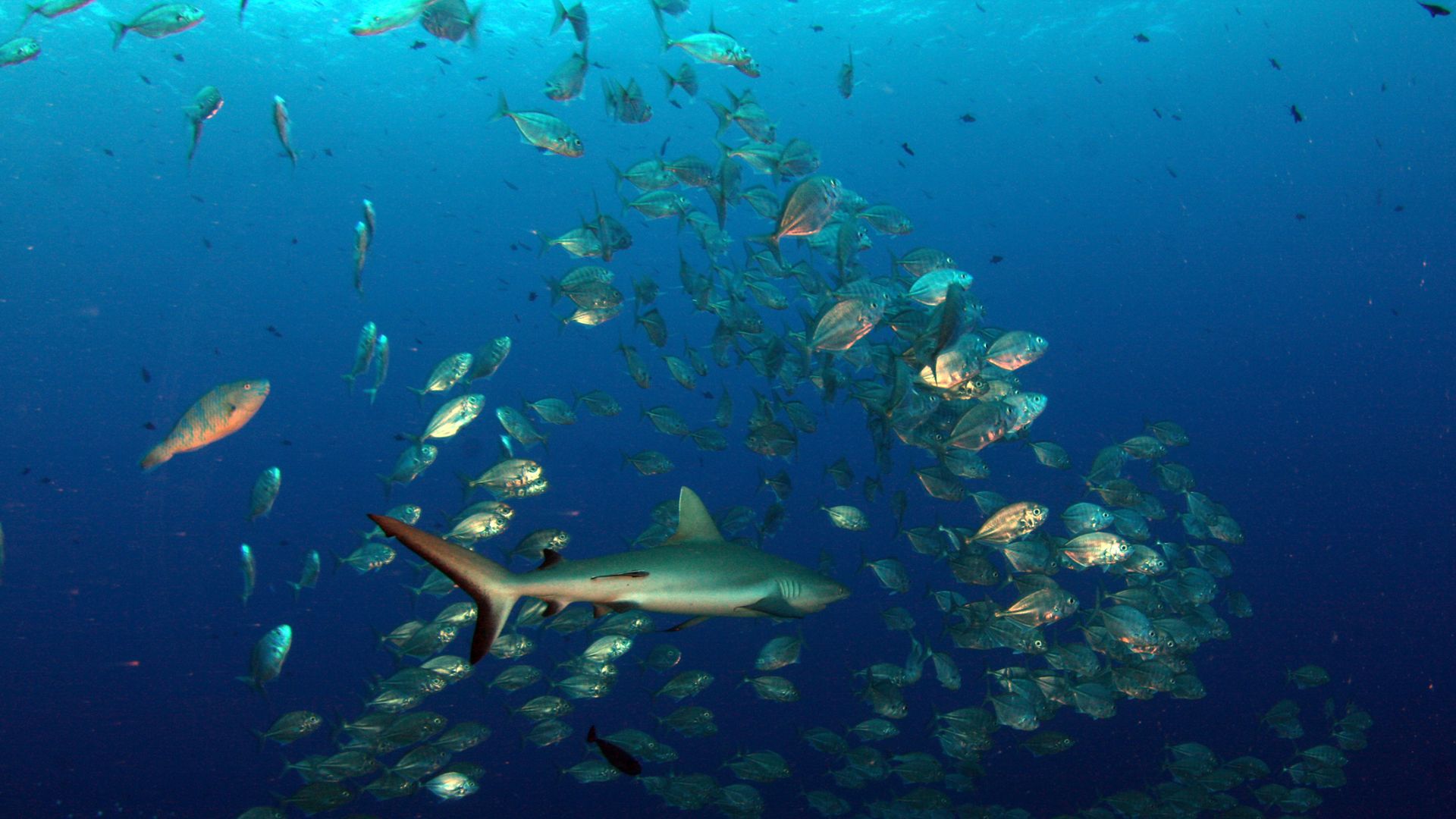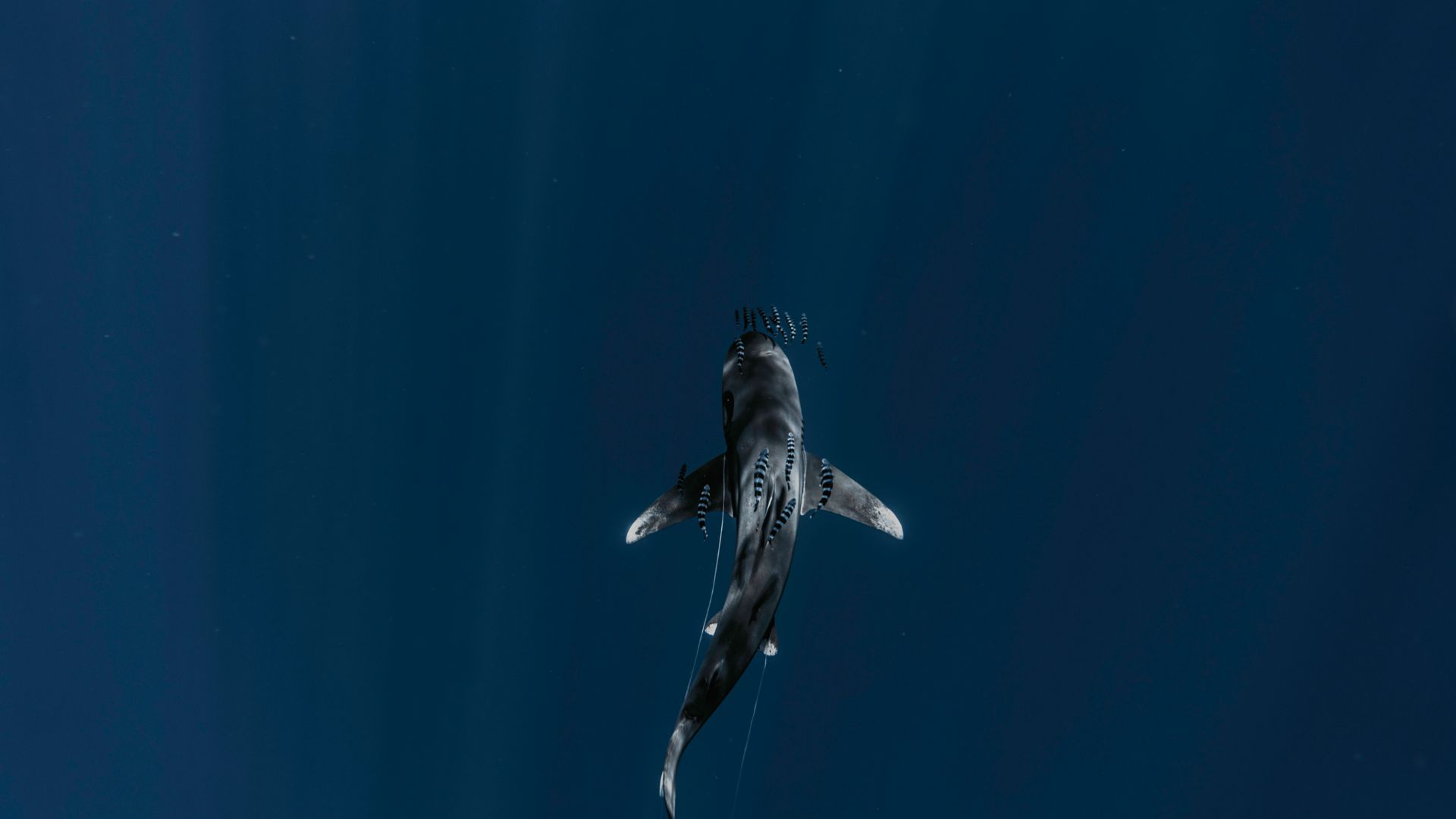
The biggest shark species: Meet the giants of the ocean
When we think of sharks, many of us picture the terrifying Great White or the ferocious Bull Shark, creatures that have made their way into popular culture as the ultimate apex predators. But what about the giants of the shark world? Not all sharks are terrifying hunters. In fact, some of the largest shark species are actually gentle giants, whose immense size and awe-inspiring presence make them fascinating, yet non-threatening creatures.
Let’s dive into the world of the biggest shark species, where size doesn’t necessarily mean danger:
- The Whale Shark: The gentle giant of the seas
- The Megamouth Shark: The mysterious filter feeder
- The Basking Shark: A slow-moving filter feeder
- Conserving the giants of the ocean

The Whale Shark: The gentle giant of the seas
At the top of the list of the biggest sharks is the Whale Shark (Rhincodon typus), which also holds the title of being the largest fish in the world. These magnificent creatures can reach lengths of up to 12 metres, though some individuals have been recorded at over 18 metres long! Despite their enormous size, Whale Sharks are not dangerous to humans. In fact, they are filter feeders, primarily feeding on tiny plankton, krill, and small fish. They cruise slowly through the ocean, filtering large volumes of water through their gills to catch their food.
Whale Sharks are often found in tropical and warm-temperate seas, where they travel long distances in search of food. These sharks have an interesting feeding behaviour, as they don’t hunt in the traditional sense of chasing prey, but instead swim through nutrient-rich waters with their mouths wide open, collecting everything in their path. This feeding style highlights the stark contrast to the typical image of sharks as aggressive predators. Instead of being a threat, Whale Sharks have become a symbol of the peaceful and awe-inspiring giants of the ocean.
Despite their size, Whale Sharks are incredibly gentle and even allow swimmers and divers to interact with them, often coming close to boats or people. This friendliness, combined with their majestic size, has made them a favourite for eco-tourism, with many people seeking out opportunities to swim alongside these giants in places like Mexico, the Philippines, and Australia. Sadly, Whale Sharks are listed as endangered, primarily due to fishing practices, habitat destruction, and boat strikes. Protecting these gentle giants is vital, as their slow reproduction rate and migration patterns make them vulnerable to overfishing and other human-induced threats.

The Megamouth Shark: The mysterious filter feeder
Another giant shark that flies under the radar is the Megamouth Shark (Megachasma pelagios), a mysterious species first discovered in 1976. Despite being one of the largest sharks in the world, it wasn’t until relatively recently that researchers confirmed its existence. The Megamouth Shark can grow up to 5.5 metres long, and like the Whale Shark, it is also a filter feeder, feeding on plankton, jellyfish, and small fish.
The Megamouth is known for its distinctive appearance, with a huge, wide mouth and large, fleshy lips. These sharks are often found at depths of 200 to 300 metres below the surface, which is why they’ve remained so elusive until modern technology allowed us to study them in more detail. They’re often spotted during deep-sea research missions, but due to their remote habitat, interactions with humans are incredibly rare. Unlike the Whale Shark, Megamouth Sharks are not commonly seen by divers or tourists, making them an enigma of the deep.
What makes the Megamouth Shark so interesting is its size paired with its peaceful feeding habits. These sharks are not the aggressive predators many people associate with sharks; instead, they filter feed in the same way as their larger relatives. While their rarity makes them difficult to study, they are considered to be a species of least concern in terms of conservation, though more research is needed to fully understand their populations and the threats they face from fishing and habitat degradation.
The Basking Shark: A slow-moving filter feeder
The Basking Shark (Cetorhinus maximus) is another giant filter feeder, known for its impressive size and slow-moving nature. Basking Sharks can grow up to 12 metres in length, making them the second-largest living shark species after the Whale Shark. These sharks are found in temperate seas around the world, often near coastal areas during the summer months, where they can be seen gliding near the surface of the water, their mouths wide open as they filter plankton from the ocean.
Despite their massive size, Basking Sharks are harmless to humans, and their slow, graceful movements have earned them the nickname “gentle giants.” Like the Whale Shark, they feed on microscopic organisms such as plankton and small fish, using their gills to filter large quantities of water. These sharks are often seen in groups, feeding together in the same areas during the seasonal plankton blooms. The Basking Shark’s role in the marine ecosystem is vital, as it helps maintain the balance of plankton populations, which in turn affects the health of the entire oceanic food chain.
Although Basking Sharks are not as endangered as the Whale Shark, they are still vulnerable to threats like overfishing, accidental entanglement in fishing nets, and habitat disruption. Over the years, their populations have declined due to hunting for their fins, which were once highly valued in the shark fin trade. Thankfully, conservation efforts are being made to protect Basking Sharks, and they are now listed as a protected species in many regions. Their gentle nature and important role in the ecosystem make them an essential species to safeguard.
Conserving the giants of the ocean
While the world’s largest sharks may not be the aggressive, bloodthirsty predators many imagine, they are still incredibly important to the health of our oceans. As filter feeders, these giant sharks play crucial roles in maintaining the balance of marine ecosystems by regulating plankton populations. Despite their non-threatening nature, these species face significant threats from human activities, including overfishing, habitat destruction, and the impacts of climate change.
Let’s recap:
- The largest fish in the world, growing up to 18 metres, and a gentle filter feeder that feeds on plankton and small fish, highlighting the contrast between size and non-threatening nature.
- A rare and mysterious species, first discovered in 1976, reaching up to 5.5 metres and feeding on plankton in deep waters, with very limited human interaction.
- The second-largest living shark, growing up to 12 metres, known for its slow, graceful movements while feeding on plankton and small fish, playing a crucial role in marine ecosystems.
- Despite their enormous size, all these giant shark species are non-aggressive, relying on filter feeding and presenting no threat to humans.
- These giant sharks are vulnerable due to overfishing, habitat destruction, and climate change, making conservation efforts crucial for their survival and the health of ocean ecosystems.
Conserving these giant sharks is essential, not only for the health of marine ecosystems but also for maintaining biodiversity. By promoting awareness, supporting conservation efforts, and respecting these magnificent creatures, we can help ensure that future generations will be able to marvel at the giants of the ocean.
“Even the largest sharks in the ocean are gentle giants, reminding us that size does not equate to danger, but to the delicate balance they maintain in the sea.”
Protecting the largest shark species is not just about preserving their size or awe-inspiring qualities; it’s about ensuring the health and future of our oceans. Let’s work together to safeguard these gentle giants for the benefit of our planet’s marine life.


